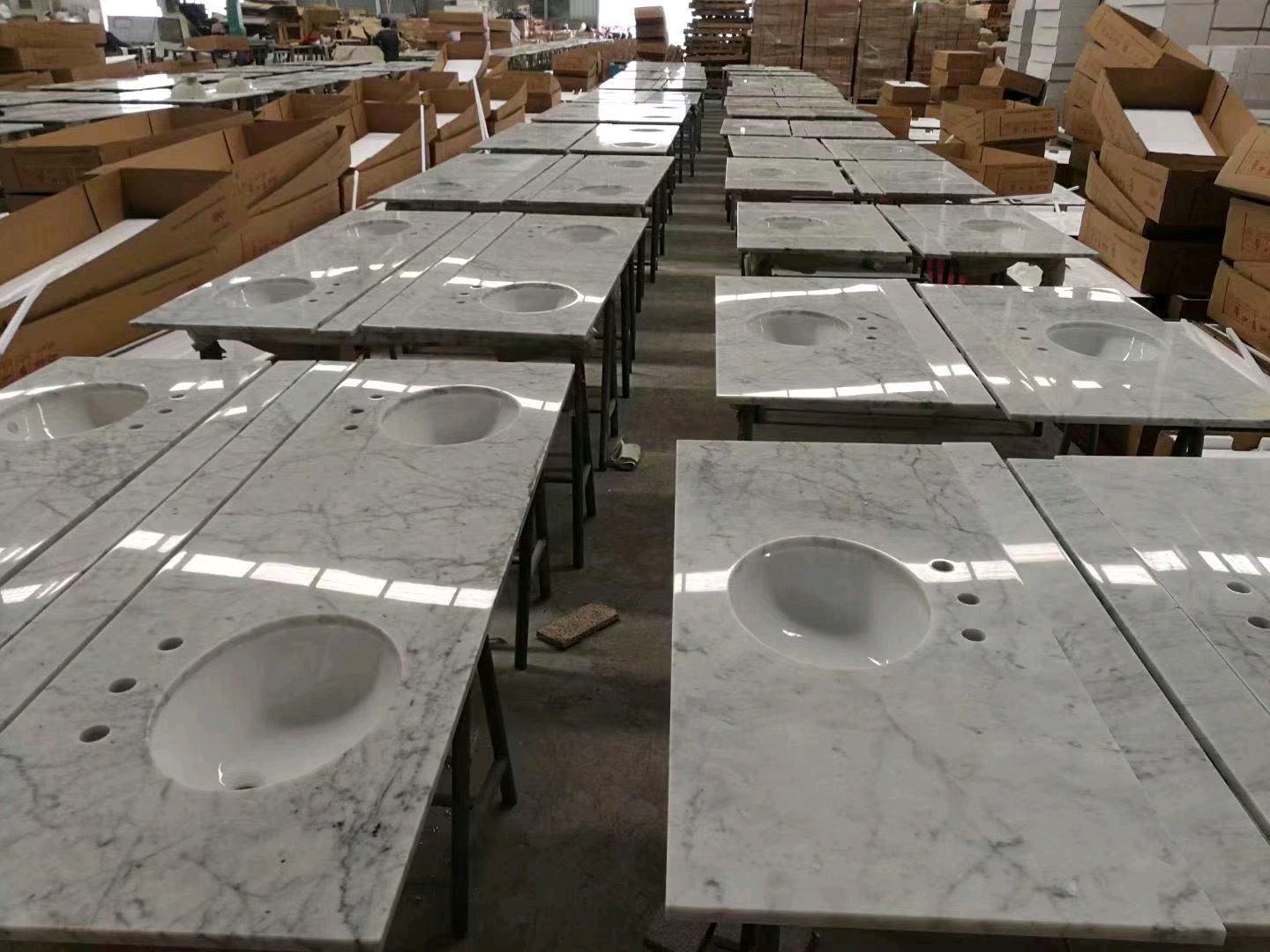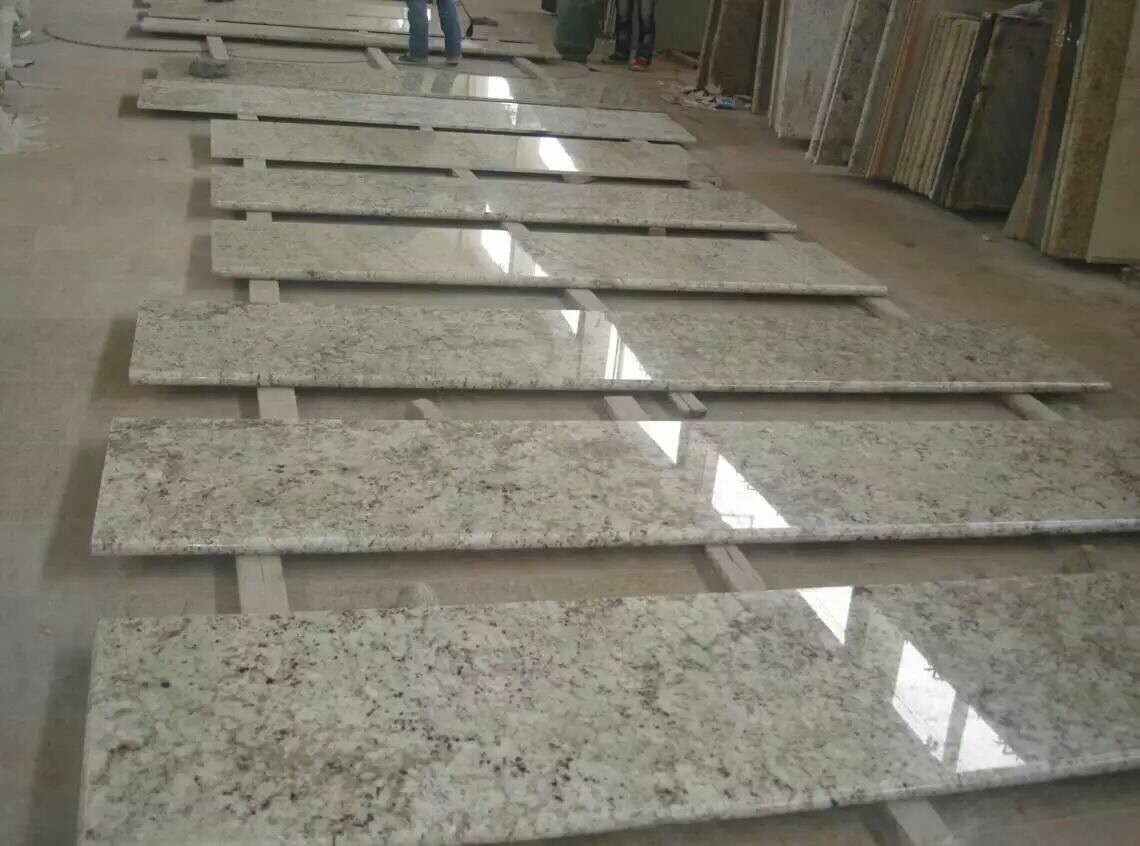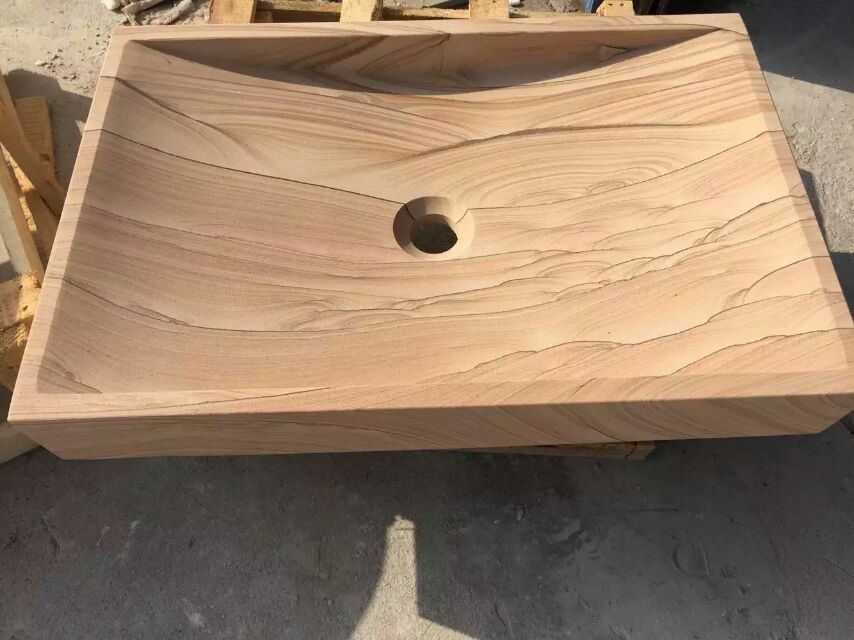A Guide to Natural Stone for Your Bathroom: From Granite to Marble, Understand the Material Differences in 3 Minutes
Material Showdown: Granite vs. Marble vs. Sandstone

The first step in your selection journey is understanding the core characteristics of each stone. Here’s a quick comparison table to get you started.
| Material | Key Advantages | Key Disadvantages | Best Use in Bathroom |
|---|---|---|---|
| Granite | ⚫ Extremely hard & durable ⚫ Highly scratch & heat resistant ⚫ Low porosity (when sealed) ⚫ Vast array of colors/patterns | ⚫ Can be expensive ⚫ Heavy, requires sturdy support ⚫ Pattern can be busy for some | Bathroom Countertops & Shower Benches. Its resilience to water, products, and wear makes it ideal for high-traffic areas. Perfect for a family bathroom. |
| Marble | ⚫ Unmatched, elegant aesthetics ⚫ Classic veining, each piece is unique ⚫ Naturally cool to the touch | ⚫ Softer & more porous ⚫ Prone to etching from acids ⚫ Requires meticulous sealing | Bathroom Vanity Tops & Accent Walls. Its luxurious look is best showcased where it can be the star, though it requires a more careful maintenance routine. |
| Sandstone | ₭ Unique, textured, matte finish ⚫ Offers a warm, organic feel ⚫ Earthy and natural color palette | ⚫ More porous and softer ⚫ Can be prone to chipping ⚫ Not ideal for heavy chemical exposure | Feature Walls & Bathroom Flooring. Its textured surface provides slip resistance and a distinct, artisanal look perfect for rustic or zen-inspired designs. |
Diving Deeper into the Materials:
1. Granite: The Durable Workhorse
Granite is an igneous rock formed from cooled magma, making it one of the hardest materials on earth. Its granular, speckled appearance comes from the interlocking crystals of quartz, feldspar, and other minerals. This composition is what gives it superior strength. For a busy bathroom where toothpaste, hairspray, and water are constant companions, granite’s resistance is a major advantage. It handles moisture brilliantly when properly sealed, making it an excellent choice for a bathroom sink countertop that sees daily use.

2. Marble: The Epitome of Luxury
Marble is a metamorphic rock known for its stunning, sweeping veins (called figurations) on a soft background. These veins are typically caused by mineral impurities like iron oxide or clay. While breathtaking, marble is softer and more reactive. Common bathroom substances like citrus-based cleaners, vinegar, or even certain cosmetics can etch the surface—dulling the polish and creating light marks. This doesn't mean you shouldn't choose it; it means you must be prepared for a patina to develop over time, which many homeowners find adds to its character. It's a choice that prioritizes beauty above all.

3. Sandstone: The Textured Artist
Sandstone is a sedimentary rock composed of compacted sand-sized minerals. It offers a completely different aesthetic—warm, tactile, and earthy. Unlike the high-gloss polish of granite or marble, sandstone is often honed to a matte finish. This makes it less slippery, a great feature for flooring. However, its porous nature means it requires a high-quality sealant to prevent staining from water and oils. It’s a fantastic choice for creating a spa-like, grounded atmosphere but is less suited for the main vanity top where products are frequently spilled.

How to Spot the Real Deal: A 3-Step Guide to Authenticity
With natural stone being a significant investment, it's crucial to ensure you're getting what you pay for. Here’s how to judge the quality and authenticity of natural stone.
1. Look for Natural Imperfections.
This is the most straightforward test. Natural stone is a product of the earth, not a factory. Look closely at the patterns and veining. In genuine marble or granite, the patterns will be complex, random, and will not repeat exactly across the slab. If you see a perfectly uniform, repeating pattern, you are likely looking at a high-quality imitation (like quartz or porcelain), but not natural stone. Hold two tiles from the same batch side-by-side; they should be similar but never identical.
2. Perform a Simple Water Absorption Test.
Porosity is a key characteristic of natural stone. A simple test (which you can ask the supplier to perform on a sample) is to place a few drops of water on the surface.
On a properly sealed stone: The water should bead up on the surface.
On an unsealed or porous stone: The water will be absorbed quickly, leaving a dark, damp spot.
While all natural stone is somewhat porous, a reputable supplier will show you how the stone performs and discuss sealing options. Be very wary if a seller claims their natural stone is "completely waterproof."
3. Always Request the Documentation.
A trustworthy supplier will be transparent about their products. Always ask for the material's technical data sheet and any relevant test reports. These documents will provide official information on the stone's:
Absorption Rate: A lower percentage is better for bathrooms.
Abrasion Hardness: Indicates its resistance to wear and scratching.
Flexural Strength: Shows how much stress it can handle without breaking.
This step separates professional fabricators from less reputable dealers and ensures you are making an informed decision.
Caring for Your Natural Stone: Preserving the Beauty
Proper maintenance is non-negotiable. The wrong care can cause irreversible damage, while the right routine will keep your stone looking pristine for decades.
The Golden Rule: Banish Acidic Cleaners.
Acids are the arch-nemesis of natural stone, especially for calcite-based stones like marble and limestone. Never use the following on your stone surfaces:
Vinegar or lemon-based cleaners
Bleach or ammonia
Harsh bathroom tub and tile cleaners
Abrasive scrubs (e.g., Comet, Soft Scrub)
These chemicals will etch the surface, stripping away the polish and leaving a dull mark.
The Right Way: Daily and Periodic Care.
For Daily Cleaning: Use a pH-neutral stone cleaner and a soft microfiber cloth. Simply wipe down the surface to remove dust and splashes.
For Sealing: Most stones need to be sealed upon installation and periodically thereafter. Granite might need resealing every 1-2 years, while marble may require it annually. You can test if resealing is needed by performing the water drop test mentioned above.
For Stains: Address spills immediately. For oil-based stains, a poultice made from a specialized stone stain remover is effective.
Recommended Care Products:
To make maintenance easy, invest in professional-grade products. We recommend using dedicated stone care systems from reputable brands such as:
Miracle Sealants: Known for their penetrating sealers that provide excellent protection without changing the stone's appearance.
Tenax: Offers a comprehensive range of cleaners, sealers, and polishing compounds for all stone types.
Aqua Mix: A trusted name providing high-performance sealing and cleaning products for natural stone.
Using products from these brands ensures compatibility and effectiveness, safeguarding your beautiful investment.
